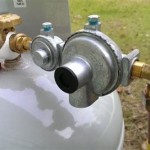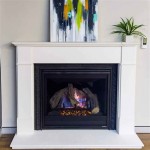Wall Hanging Ventless Natural Gas Fireplace: A Comprehensive Guide
Wall hanging ventless natural gas fireplaces offer a modern and aesthetically pleasing solution for adding warmth and ambiance to a home without the need for traditional chimney or flue systems. These fireplaces directly combust natural gas within a sealed unit and release heat into the room. Their ventless design simplifies installation, making them suitable for various residential settings, including apartments, condos, and houses where chimney installation is impractical or costly. These units have gained popularity due to their ease of use, space-saving design, and ability to provide supplementary heating.
The functionality of a wall hanging ventless natural gas fireplace hinges on a careful balance of combustion and safety mechanisms. Natural gas is supplied to the burner through a gas line, and the fireplace is ignited either electronically or with a pilot light. The unit then converts the gas into heat, which radiates into the room. A critical component is the Oxygen Depletion Sensor (ODS), which continuously monitors the oxygen levels in the room. If the oxygen level drops below a safe threshold, the ODS automatically shuts off the gas supply to prevent carbon monoxide buildup. This built-in safety feature is paramount for ventless fireplaces, ensuring user safety within enclosed spaces. The amount of heat generated by the fireplace is measured in British Thermal Units (BTUs), ranging from smaller units suitable for supplementary heating in a small area to larger ones for heating more expansive spaces. Understanding the BTU output is critical in selecting a unit that effectively heats the intended area without overheating.
Installation and Location Considerations
Proper installation is crucial for the safe and efficient operation of a wall hanging ventless natural gas fireplace. While the absence of venting simplifies the installation process compared to traditional fireplaces, adherence to manufacturer guidelines and local building codes is mandatory. A qualified gas technician should handle the gas line connection to ensure a leak-free and code-compliant installation. The wall on which the fireplace is mounted must be structurally sound and capable of supporting the unit's weight. Furthermore, sufficient clearance from combustible materials, such as curtains, furniture, and wall coverings, is essential to prevent fire hazards. Local building codes typically specify the minimum clearance distances required.
Selecting the appropriate location for the fireplace is equally important. The fireplace should be placed in a well-ventilated area to facilitate airflow and prevent the accumulation of combustion byproducts. It should not be installed in confined spaces such as bedrooms or bathrooms unless specifically approved by the manufacturer and local codes. In addition, the proximity to windows and doors should be considered to minimize heat loss and ensure efficient heating. The placement of the fireplace should also be aesthetically pleasing, serving as a focal point in the room while maintaining a safe distance from potential obstructions.
Safety Features and Maintenance
Ventless natural gas fireplaces are equipped with multiple safety features designed to protect users. The Oxygen Depletion Sensor (ODS), as previously mentioned, is a critical component that monitors oxygen levels and shuts off the gas supply in the event of insufficient oxygen. Another safety feature is a flame sensor or thermocouple, which ensures that the gas supply is cut off if the flame is extinguished. These features work in tandem to prevent gas leaks and carbon monoxide poisoning. Regular inspection and maintenance are essential to ensure these safety features function correctly.
Routine maintenance of a wall hanging ventless natural gas fireplace involves cleaning the burner and pilot light to remove dust and debris that can impede gas flow and affect combustion efficiency. The ODS and flame sensor should be inspected periodically to ensure they are free from obstructions and functioning correctly. The fireplace's exterior should also be cleaned regularly to maintain its appearance. It is recommended to have a qualified technician inspect the fireplace annually to ensure all components are in good working order and to address any potential issues before they escalate. A carbon monoxide detector should be installed in the same room as the fireplace to provide an additional layer of protection. Battery operated detectors should have their batteries replaced regularly following manufacturer instructions.
Benefits and Limitations of Ventless Technology
The primary benefit of wall hanging ventless natural gas fireplaces is their ease of installation compared to traditional vented fireplaces. The absence of a chimney or flue eliminates the need for costly and complex venting systems, making them ideal for homes where installing a chimney is impractical or impossible. Ventless fireplaces are also more energy-efficient because they retain heat within the room rather than losing it through a chimney. This can result in lower heating bills, particularly when used as a supplementary heating source. Furthermore, these fireplaces offer design flexibility, allowing homeowners to choose from various styles and finishes to complement their interior decor. Their space-saving design makes them suitable for smaller rooms or areas where floor space is limited.
However, ventless technology also has limitations. One of the primary concerns is the potential for indoor air quality issues. While ventless fireplaces are designed to burn gas cleanly, they still produce small amounts of combustion byproducts, including carbon dioxide and water vapor. Insufficient ventilation can lead to a buildup of these byproducts, which can negatively impact indoor air quality. Proper ventilation is crucial to mitigate this risk. Furthermore, some individuals may be more sensitive to the combustion byproducts, experiencing symptoms such as headaches, nausea, or respiratory irritation. Additionally, ventless fireplaces may not be permitted in all jurisdictions due to concerns about safety and air quality. It is essential to check local building codes and regulations before installing a ventless natural gas fireplace.

Vent Free Archives SÓlas Contemporary Fireplaces

Empire Boulevard 30 Inch Slim Line Wall Mounted Recessed Vent Free Gas Fyre Direct

Fireplace Insert Short Wall Google Search Gas Vent Free Natural

Duluth Forge 28 In 26 000 Btu Ventless Linear Wall Gas Fireplace With Thermostat Black 110037 The Home Depot

Bluegrass Living 26000 Btu Wall Mount Indoor Natural Gas Or Liquid Propane Vent Free Infrared Heater In The Space Heaters Department At Com

Empire Boulevard 30 Inch Slim Line Wall Mounted Recessed Vent Free Gas Fyre Direct

Plazmafire Vf24 Whvf24 Ambassador Fireplaces

Milan 24 Inch Ventless Wall Mounted Bio Ethanol Fireplace Ew

Duluth Forge 28 In 26 000 Btu Ventless Linear Wall Gas Fireplace With Thermostat Black 110037 The Home Depot

Monessen Vent Free Gas Fireplace Artisan
Related Posts








